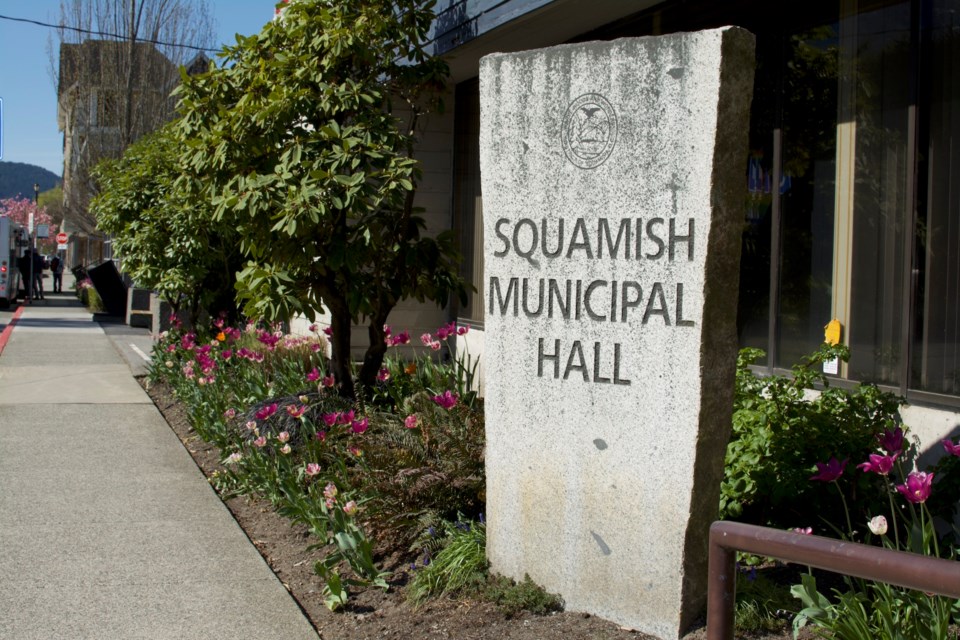While it all sounds complicated, the idea behind a proposal District of Squamish council will consider is simple — streamline some approval processes so a few more decisions are delegated to staff.
At its March 21 meeting, council approved District staff drafting bylaw amendments to change some public hearing requirements for land development and zoning.
These changes would mean slightly fewer public hearings per year.
"When a public hearing is not held, there are considerable council time savings for attendance, and preparation and staff time [for] … presentation, organization, notification and agendas. It also gives the opportunity, where appropriate, to give a proposed amendment three bylaw readings at one meeting. The result is a streamlined process and time savings for the applicant," reads the staff report.
District staff will now begin preparing these bylaw amendments, which will go before council in the spring or early summer.
At the March 14 committee of the whole meeting, this proposal was presented to council for feedback.
The proposal includes that a public hearing would no longer be automatically held for zoning bylaw amendments that are considered minor and within the Official Community Plan (OCP) policy.
These would include:
- Residential and mixed-use applications where the residential units do not exceed 20 units and non-residential space does not exceed 300 or 400 square metres of floor area.
- Non-residential applications where the floor area does not exceed 300 or 400 square metres.
- Non-residential applications within the Sea to Sky Business Park.
- Applications within the Oceanfront development or areas where a recent Neighbourhood Plan has been adopted or amended within the last 10 years.
- Applications for 100% market rental or affordable housing projects.
Staff said of the 17 such applications over the past two years, six would meet the proposed criteria and thus would not have required a public hearing.
Some types of Development Variance Permits (DVP) also would be delegated to staff including:
- Design criteria for off-street parking or loading spaces.
- Provision of off-street parking spaces for buildings or uses, provided that the number of required spaces is not reduced by more than 10% and any cash-in-lieu options are utilized.
- Regulations for the siting or height of solid waste separation and storage facilities, outdoor covered structures and greenhouses.
- Site coverage regulations, provided that maximum site coverage is not increased by more than 25%. Site coverage refers to the amount of a lot or parcel of land a development takes up.
- Building setback regulations, provided that a required setback is not reduced by more than 25%. A setback is the distance the exterior of a building can be from an adjacent property line.
- Projections into required setback, with conditions. A projection is a feature of a building that extends outside it.
- Building height regulations, provided that permitted height is not increased by more than 10%.
According to staff, over the last two years, there was an average of 13 applications per year. Based on the proposed criteria, about 40% of applications would be eligible for delegation.
At the March 14 meeting, council asked for some tweaks that will be made to the amendments when presented to elected officials for their approval.
The Resort Municipality of Whistler has implemented similar regulations.
Under the new proposals, council would be able to recommend a public hearing when there is a lot of interest in an application, which would be determined on a case-by-case basis at the time of the second reading.
At the March 14 committee of the whole meeting, Jonas Velaniskis, the director of planning for the District, gave the example of the Garibaldi Estates, where eligible changes would likely go to a public hearing given the interest in the neighbourhood.
This public hearing proposal comes after the province passed Bill 26, which aims to simplify development approvals in municipalities to build housing more quickly to meet demand.
Part of the discussion during the March 21 meeting was ensuring District staff would consider the best ways to notify the public on the future signage of what tools are at their disposal to have their voices heard, if the amendment were to pass.
Numerous council members agreed that public transparency was important.
“It’s important, particularly anytime a regulation changes, that we pay particular attention to how it’s being communicated,” said Mayor Armand Hurford. “It’s important to pay particular attention to the signage as it is sort of one of the first things that folks notice.”
For more information, please view the March 14 or 21 council meetings through the District’s YouTube page at YouTube.com/@DistrictofSquamish.
~With files from Jennifer Thuncher/The Squamish Chief




